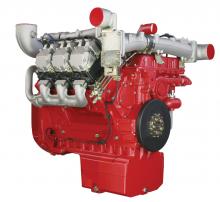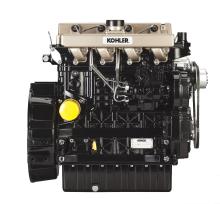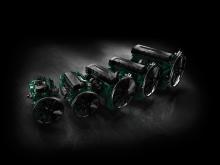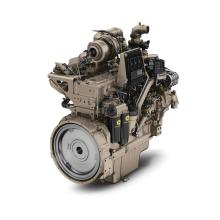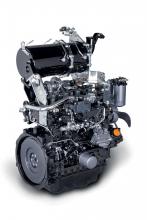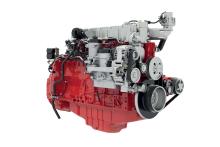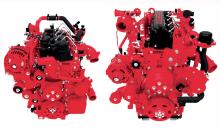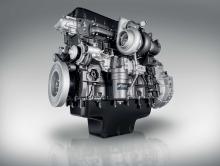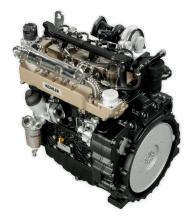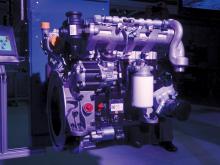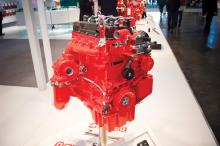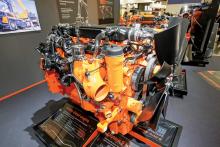A series of innovations in engine technology will cut emissions and deliver fuel savings for customers - Mike Woof writes
The start of 2014 saw the commencement of the final phase of the current set of engine emissions requirements for Europe and North America. With the introduction of the first set of Tier 4 Final/ Stage IIV emissions regulations, new generation diesel engines used in construction will deliver cleaner operating performance than ever before. These highly efficient engines have been devel
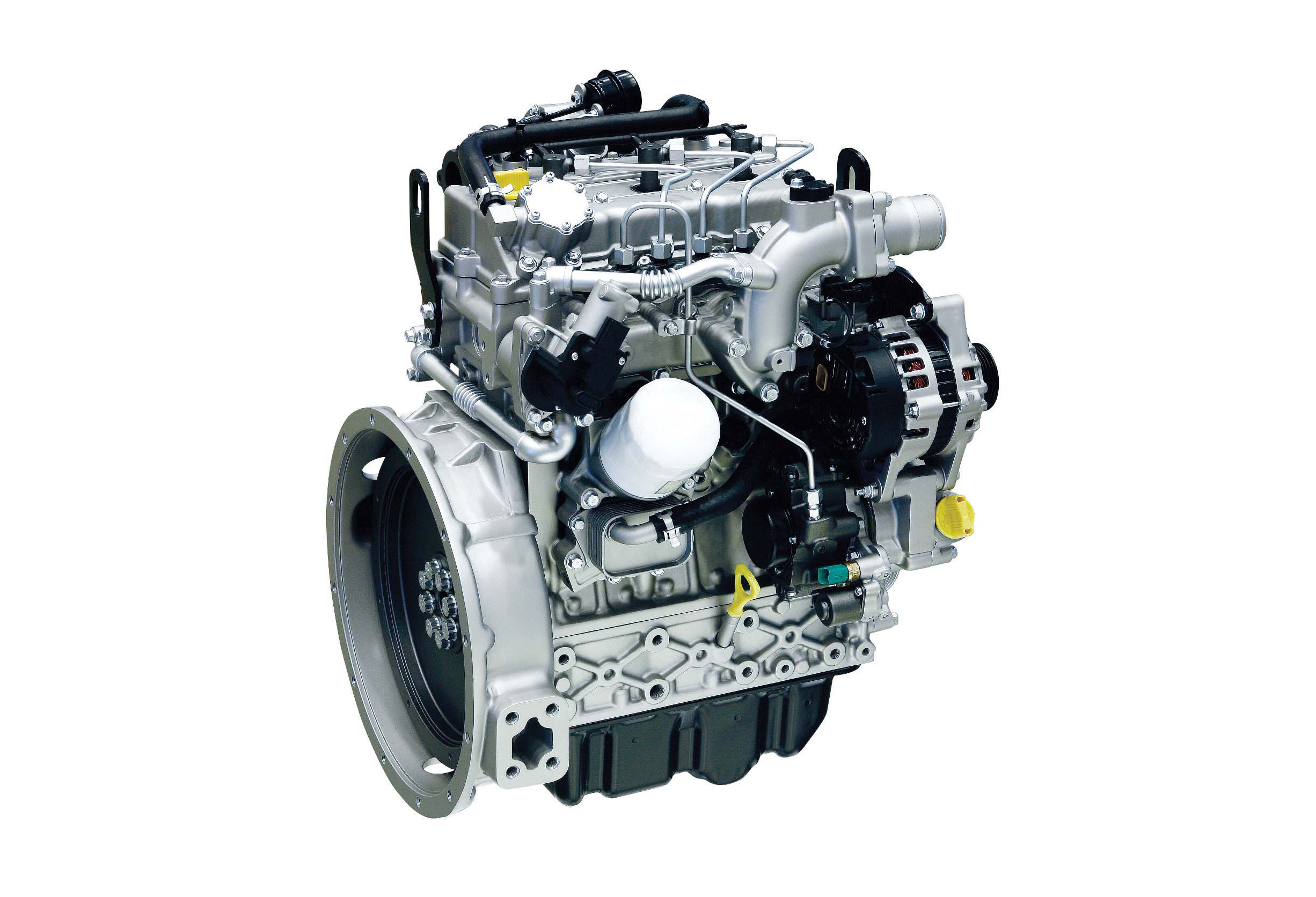
The new Bobcat engines re being developed by sister company Doosan Infracore Engine Business Group
RSSA series of innovations in engine technology will cut emissions and deliver fuel savings for customers - Mike Woof writes
The start of 2014 saw the commencement of the final phase of the current set of engine emissions requirements for Europe and North America. With the introduction of the first set of Tier 4 Final/ Stage IIV emissions regulations, new generation diesel engines used in construction will deliver cleaner operating performance than ever before. These highly efficient engines have been developed following intensive research programmes and utilise highly sophisticated technologies to cut tailpipe emissions as well as working noise.
Early in 2014 the first wave of new low emission engines came to market. However more firms have since released new and improved designs to add to the choice available for customers.
In Europe compact equipment specialist1130 Bobcat has said that it is transitioning over to the necessary Stage IIIB/Stage IV emissions regulations for machines with power outputs of over 37kW. This has resulted in significant changes to engine design, added components and unique service requirements, with the incorporation of non-DPF Stage IIIB/Stage IV compliant Bobcat branded engines in a number of models.
The new non-DPF engines are being supplied by sister firm6902 Doosan Infracore Engine Business Group and will be installed in some models in 2015. There will be three engine models for the output range from 37-74kW, with displacements of 1.8, 2.4 and 3.4litre, respectively. The engines will be used in 500, 600, 700 and 800 platform Bobcat loaders, except for the S510 and S530 models, which are below 37kW. The new engines have been subjected to more than 140,000 hours of testing to prove the designs, while non-DPF technology has been selected as it minimises long-term Stage IIIB/Stage IV parts and maintenance costs.
German engine specialist7125 Hatz is offering its liquid-cooled 4H50TIC engine as a ready-to-install Open Power Unit (OPU). The complete system includes the engine and all the necessary parts for cooling, with the customer only having to source the instrument box, fuel lines and battery. The Hatz package includes a radiator and intercooler, as well as the necessary tubing and wiring harness. For installation the customer only has to connect the tank, pre-filter and pump as well as the air filter, battery and control box.
Hatz says that it has paid particular attention to the fact that the package will be installed in a wide variety of equipment types and for a variety of working applications. The cooling is adapted to a temperature range of up to 46°C, although different radiators are available if required. The 1.95litre 4H50TIC engine meets the stage IIIB/Tier 4 Final emissions standards without the use of a diesel particulate filter (DPF) and the aftertreatment is limited to a DOC (diesel oxidation catalyst). The power unit can be supplied with a separable DPF if this is required however. The engine has also passed the necessary emissions tests for Switzerland, which are stricter than those for the EU territories.
The versatile 4H50TIC OPU weighs in at 255kg, measuring 699mm wide, 935mm long and 807mm high, allowing it to be fitted into restricted spaces. Power ratings vary from 45.9-55kW. Key features of the engine include robust construction and simplicity, with its two valve technology in conjunction with a camshaft in block and maintenance free hydraulic lifters.
257 John Deere is offering a new 6.8litre engine for use in 250kVA power generation packs. The firm claims that this engine offers both high power density combined and high fuel efficiency. While 250kVA generator sets are generally driven by larger engines, John Deere says that its 6.8litre unit benefits from the use of proven systems such as high pressure common rail technology, hardened block and piston and four-valve cylinder heads. The 250kVA engine is available as a bare engine or as a power unit which includes factory mounted cooling package and air filter.
For OEMs, the 6.8litre engine allows them to design smaller canopies while the versatile power plant allows the same engine to be used in 50Hz or 60Hz applications. The company claims that the engine offers high load acceptance and low fuel consumption, while optional crank case ventilation can keep the engine bay clean. In applications where multiple generators run in parallel, electronic controls enable unit synchronisation. In EU countries, the new, non-certified 250kVA prime / 275 kVA standby power engine is suitable for stationary generator sets (both standby and prime). In non-regulated countries, it can also be used for mobile applications as well.
Versatility, reliability and high power density are features Volvo Penta claims for its new line of Stage II, Stage IIIA and Stage IV-compliant engines with capacities of 5 and 8litres. The firm is keen to meet the needs of different territories by introducing the D5 and D8 engines that meet EU Stage II, Stage IIIA and Stage IV emissions standards. These units have been developed in cooperation with Volvo Trucks and the3970 Volvo Group, these benefit from a redesigned platform and advanced fuel injection and aftertreatment. Although the D5 and D8 engines are new to 783 Volvo Penta in Stage II and IIIA configuration, the same base units have been well proven in Volvo Trucks and Volvo Buses.
hese D5 and D8 engines share the same base design as the larger D11, D13 and D16 units, as well as a common electronics platform that allows them to communicate using the same protocol, regardless of emissions level. Displacement in the D5 and D8 is increased compared to previous versions, which is said to offer improved engine block stiffness, as well as higher torque at low speed. However, fuel consumption has been reduced by as much as 2.5%.
The company claims that the higher power density of the D5 unit allows customers to install this engine in place of earlier generation 6 or 7litre engines, reducing the size and weight.
With its D5 and D8 engines, Volvo Penta has managed to avoid the need for exhaust gas recirculation (EGR), reducing maintenance requirements and costs.
Volvo Penta’s Stage IV aftertreatment system is simpler and more straightforward than that of other manufacturers. While most Stage IV competitor engines require a diesel particulate filter (DPF) or diesel oxidation catalyst (DOC), Volvo Penta’s Stage IV engines use only selective catalytic reduction (SCR). This cuts maintenance needs and costs, as well as boosting productivity and uptime. In addition the start/stop function further lowers fuel consumption, noise and emissions.
The new, Final Tier 4 compliant,7139 Yanmar L70 and L100 diesels currently in development will meet the Final Tier 4 emission regulations. These engines are said to suit duties in construction equipment, generators, pumps and hydraulic power packs. Key features of the L70 and L100 include being a drop-in replacement for Tier 4 Interim L-Series models, while variable and fixed speed models will be available and the DOC is fitted integral with the exhaust system. The Final Tier 4 compliant L-Series is scheduled to be available in the first quarter of 2015, with testing and validation underway at present.RSS
The start of 2014 saw the commencement of the final phase of the current set of engine emissions requirements for Europe and North America. With the introduction of the first set of Tier 4 Final/ Stage IIV emissions regulations, new generation diesel engines used in construction will deliver cleaner operating performance than ever before. These highly efficient engines have been developed following intensive research programmes and utilise highly sophisticated technologies to cut tailpipe emissions as well as working noise.
Early in 2014 the first wave of new low emission engines came to market. However more firms have since released new and improved designs to add to the choice available for customers.
In Europe compact equipment specialist
The new non-DPF engines are being supplied by sister firm
German engine specialist
Hatz says that it has paid particular attention to the fact that the package will be installed in a wide variety of equipment types and for a variety of working applications. The cooling is adapted to a temperature range of up to 46°C, although different radiators are available if required. The 1.95litre 4H50TIC engine meets the stage IIIB/Tier 4 Final emissions standards without the use of a diesel particulate filter (DPF) and the aftertreatment is limited to a DOC (diesel oxidation catalyst). The power unit can be supplied with a separable DPF if this is required however. The engine has also passed the necessary emissions tests for Switzerland, which are stricter than those for the EU territories.
The versatile 4H50TIC OPU weighs in at 255kg, measuring 699mm wide, 935mm long and 807mm high, allowing it to be fitted into restricted spaces. Power ratings vary from 45.9-55kW. Key features of the engine include robust construction and simplicity, with its two valve technology in conjunction with a camshaft in block and maintenance free hydraulic lifters.
For OEMs, the 6.8litre engine allows them to design smaller canopies while the versatile power plant allows the same engine to be used in 50Hz or 60Hz applications. The company claims that the engine offers high load acceptance and low fuel consumption, while optional crank case ventilation can keep the engine bay clean. In applications where multiple generators run in parallel, electronic controls enable unit synchronisation. In EU countries, the new, non-certified 250kVA prime / 275 kVA standby power engine is suitable for stationary generator sets (both standby and prime). In non-regulated countries, it can also be used for mobile applications as well.
Versatility, reliability and high power density are features Volvo Penta claims for its new line of Stage II, Stage IIIA and Stage IV-compliant engines with capacities of 5 and 8litres. The firm is keen to meet the needs of different territories by introducing the D5 and D8 engines that meet EU Stage II, Stage IIIA and Stage IV emissions standards. These units have been developed in cooperation with Volvo Trucks and the
hese D5 and D8 engines share the same base design as the larger D11, D13 and D16 units, as well as a common electronics platform that allows them to communicate using the same protocol, regardless of emissions level. Displacement in the D5 and D8 is increased compared to previous versions, which is said to offer improved engine block stiffness, as well as higher torque at low speed. However, fuel consumption has been reduced by as much as 2.5%.
The company claims that the higher power density of the D5 unit allows customers to install this engine in place of earlier generation 6 or 7litre engines, reducing the size and weight.
With its D5 and D8 engines, Volvo Penta has managed to avoid the need for exhaust gas recirculation (EGR), reducing maintenance requirements and costs.
Volvo Penta’s Stage IV aftertreatment system is simpler and more straightforward than that of other manufacturers. While most Stage IV competitor engines require a diesel particulate filter (DPF) or diesel oxidation catalyst (DOC), Volvo Penta’s Stage IV engines use only selective catalytic reduction (SCR). This cuts maintenance needs and costs, as well as boosting productivity and uptime. In addition the start/stop function further lowers fuel consumption, noise and emissions.
The new, Final Tier 4 compliant,

